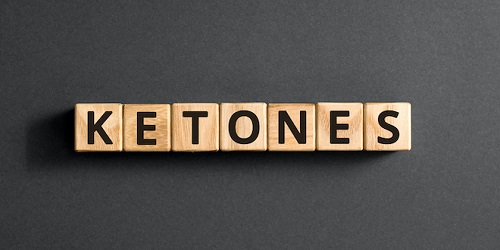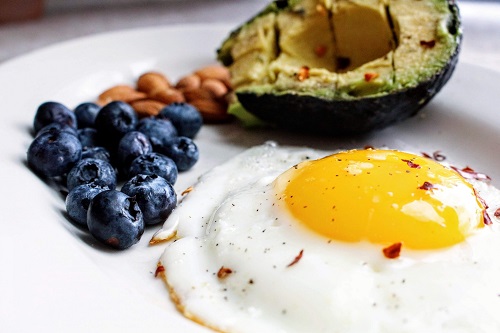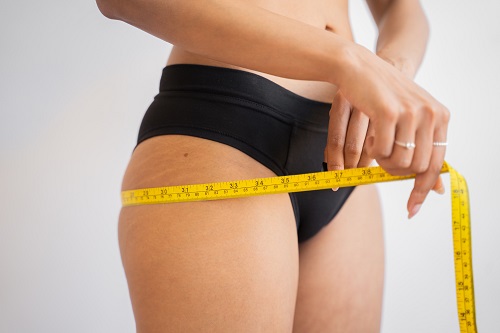What is the Keto Diet?
People are always searching for new diets to help them lose weight more effectively. In recent years, there has been a growing trend in the number of people going on the keto diet.
The term “keto diet” is short for “ketogenic diet.” It is a diet where you consume fewer carbohydrates and more fats. Some people call it a low-carb, high-fat diet or LCHF. The philosophy behind the keto diet is rather interesting. Instead of consuming a lot of carbohydrates for energy, you consume more fats for energy.
High-carbohydrate diets cause a person’s body to store more fat and gain more weight because the body doesn’t need all the consumed carbohydrates for energy. But if you reduce the carbohydrate intake and increase the fat intake, fewer fats will get stored in your body. The result will lead to significant weight loss.

Let’s put this into perspective. The typical daily American diet consists of 55% carbohydrates, 10% fat, and 35% protein. The daily keto diet is about 10% carbohydrates, 70% fat, and 20% protein. These percentages can fluctuate slightly, depending on how hardcore you want to do keto. More experienced keto dieters will consume around 5% carbohydrates, 80% fat, and 15% protein.
When you calculate your daily macronutrient intake in this manner, it will put your metabolism into a state of ketosis. That is how you start burning calories and losing weight.
What is Ketosis?
Ketosis is defined as a metabolic state that forces the body to consume stored fat for energy rather than carbohydrates. When you follow a regular high-carb diet, your digestive system converts sugars from foods into glucose. Your body delivers glucose to the muscles and organs via your bloodstream. Glucose serves as the fuel that allows your muscles and organs to continue functioning correctly.
However, if your body doesn’t consume enough carbohydrates to produce glucose, it puts your body in a state of ketosis. This forces the body to find an alternative source of energy for its muscles and organs. It turns to the liver to convert the body’s fat reserves into something called “ketones.”
What Are Ketones?
Ketones are special molecules that fuel your organs and muscles if there is a lack of glucose in the bloodstream. When the body enters ketosis, the liver generates ketone molecules from the stored fats throughout the body. Your muscles and organs will always try to absorb glucose for energy before ketones. But if there is not enough glucose to satisfy the energy demands of the organs and muscles, they will absorb ketones as an alternative fuel source.

Am I In Ketosis?
Changing to a low-carb diet is the first step to get into a state of ketosis. You’ll want your daily macronutrient intake to be around 10% carbohydrates, 70% fat, and 20% protein. Stay consistent with this diet, and you will be on the road to ketosis within a week.
Aside from the apparent weight loss that you will experience, there are three testing methods for ketosis. You can get a blood test, urine test or breath test and have your ketone levels analyzed.
Blood tests conducted by a nurse or doctor would give you the most accurate results. But there are home test kits you can use to test your blood, urine or breath for ketones. You can find these kits for sale at your local pharmacy or drug store. They don’t require a prescription.
Health ketosis requires the blood ketone levels to be between 0.5 and 3 millimoles per liter. If your home test kit shows that your ketone levels are within this range, it means you are in ketosis.
How Long Does It Take to Go into Ketosis?
If you can maintain the keto diet for 2 to 4 days, it should put your body into ketosis. The body works slowly, so it needs time to switch from glucose to ketones for its energy supply.
Please consult with a doctor before switching to a keto diet. Some people have preexisting medical conditions which require them to consume more fiber. Since the keto diet requires less fiber, it could aggravate those other medical conditions.
What are Net Carbs?
The nutritional labels of food products state the total number of carbohydrates per serving. But when you calculate your carbohydrate intake for the keto diet, you cannot factor in the total number of carbohydrates. Instead, you’re only allowed to count the total number of net carbohydrates (Net Carbs).
When you subtract the total grams of fiber from the total grams of carbohydrates in a particular food product, you get the total number of Net Carbs. You should also subtract sugar alcohols and all types of non-metabolized sweeteners from the total carb amount too. Why? Because Net Carbs are the only carbs that get used for energy. Fiber and sugar alcohols do not provide energy to the body.
You can find several different macronutrient calculators online that make it easy to conduct these Net Carb calculations. No one expects you to be a mathematician to figure all this out.

Best Foods for Keto Diet
Don’t assume that keto diets force you to eat tasteless and bland foods. The truth is that keto diets actually give you a lot of flavorful food choices. They include the following:
- Red Meat
- Eggs
- Fish
- Chicken
- Coffee / Tea
- Avocado Oil
- Coconut Oil
- Leafy Green Vegetables
- Cheese
- Butter
- Blackberries
- Raspberries
- Low-carb seeds and nuts
- Low-carb spices and sweeteners
Many food manufacturers have started to recognize the keto diet trend. That is why they are releasing “keto-friendly” variations to traditional food products.
For example, you may see products like keto milkshakes and keto cookies on the shelves of your local supermarket. While these foods might have low levels of carbohydrates, you still need to make sure that they don’t contain other junk ingredients.
Our best advice is to stay as natural as possible with your foods. Avoid all types of processed foods, even if the packaging claims they are “keto-friendly.”

Foods to Avoid for Keto Diet
All high-carb foods should be avoided. This can get tricky because certain fruits and vegetables have carbohydrates, including potatoes, corn, apples, raisins, and bananas. We tend to think these are healthy foods because they are natural and unprocessed. But the starchy vegetables and high fructose fruits are counterproductive to a steady keto diet. Here is a specific list of foods to avoid for the keto diet:
- Quinoa
- Bread
- Rice
- Beans
- Dried fruits (e.g., pears, apples, mangos)
- Pasta
- Cereals
- Fruit juices
- Sweetened Yogurt
- Potato Chips
- Milk
- Desserts (e.g., muffins, pastries, donuts, cakes).
Once again, you can find keto-friendly and low-carb alternatives to these products. But it is still better to stay natural, just to be on the safe side. Perhaps you can begin your keto diet with these keto-friendly variations in order to help your tastebuds adapt. But it is best to transition away from the keto-friendly variations and stick with all-natural keto-friendly foods.

Benefits of Keto Diet
Okay, so what is all this for anyway? Is it worth managing your macronutrients and cutting carbohydrates in order to maintain a keto diet? Let’s examine some of the benefits of a keto diet. Then you will see why it is worth the effort.
- Lose Weight: The number one reason why people go on a keto diet is to lose weight. It is the one diet which helps people drop weight faster than other diets. The average person drops 5 to 10 pounds within the first week of starting a keto diet. If you’re significantly overweight, you have the potential to lose over 100 pounds after 3 or 4 months.
- Avoid Diabetes: High-carb diets contribute to the development of Type 2 Diabetes. But since the keto diet requires a low-carb intake, it has the potential to prevent or reverse Type 2 Diabetes altogether. Maintaining a low blood sugar level will reduce your body’s demand for insulin.
- Better Immune Health: Poor immune health and increased inflammation can be the result of high blood sugar levels. But if you balance your blood sugar levels with a keto diet, you can get your immune health and inflammatory symptoms under control. Some people claim that keto diets help control their acne, depression, eczema, arthritis, and several other inflammatory-related conditions.
- Better Mental Health: Numerous research studies have shown that a keto diet can help people maintain their mental clarity and prevent cognitive decline. It may also decrease the symptoms associated with dementia, Alzheimer’s disease, and Parkinson’s disease.
- Feel More Energetic: When you are on a regular diet, your body is always on the verge of running out of energy. You need to constantly eat and refuel. With a keto diet, however, the body taps its fat reserves, a nearly unending energy source. The body, then, is able to maintain constant energy levels throughout the day. The result is, you end up feeling a lot more energetic.

- Improved Levels of Good Cholesterol: HDL cholesterol helps get rid of the body’s bad cholesterol reserves. When you’re on keto, your body’s triglyceride levels fall and your HDL cholesterol levels rise.
- Better Blood Pressure: When you’re on the keto diet, it drops your blood pressure. Many people on the keto diet find that they are able to stop taking blood pressure medicine altogether.
- Brain Function: A poorly functioning brain, as you may have already experienced, leads to lessened work productivity, which in turn means an unhappy boss, lack of job satisfaction, sugar cravings for energy, and depression. It’s a horrible domino effect. The original ketogenic diet was formulated by Dr. Russell Wilder in the early 20th century to treat epilepsy. The keto benefits on the brain were amazing. The success rate was phenomenal and it is still used today to treat epilepsy and other brain disorders. Research also indicates that ketones are more efficient brain fuel than glucose.
- Reduced Triglycerides: Fat subunit molecules called triglycerides normally circulate in your bloodstream. High levels of triglycerides are a significant risk factor in the development of heart disease. In the keto diet, because fat is being burned for energy, the number of triglyceride molecules in the bloodstream decreases, reducing the risk of heart disease.
- Reduced Blood Sugar and Insulin: Another part of the keto benefits group is that it reduces blood sugar and insulin. Since carbohydrate intake is limited, blood sugar and insulin levels are lowered. This is particularly important for people with type 2 diabetes, which causes a buildup of glucose in the bloodstream. The keto diet can be used to reduce or eliminate the need for diabetic insulin injections.
- Mental Performance: The ketones produced from a low carb diet are a much more efficient source of energy than glucose. Studies have indicated that they can improve cognitive impairment and even help with diseases such as Alzheimer’s and Parkinson’s. The high-fat diet helps to support the balance of essential omega 3s and omega 6s which are vital for optimal brain function. Additionally, ketosis is able to boost mitochondria production and adenosine triphosphate within the brain’s memory cells, thereby improving mental performance and clarity.

Types of Keto Diet
There are four variations to the keto diet. Each variation revolves around your specific macronutrient intake and fitness routine. Let’s review the four variations to give you a better understanding of them.
- Standard Keto Diet: The standard keto diet requires no more than 20 to 50 grams of carbohydrates per day. If you are new to keto dieting, then start with the standard variation. The macronutrients can be divided into 5% carbohydrates, 20% protein, and 75% fat.
- Cyclical Keto Diet: The cyclical keto diet puts you on a low-carb diet for five days and then lets you have two high-carb days afterwards. Once you complete the two high-carb days, you repeat the cycle and go back to 5 days of keto again. A high-intensity exercise regimen is recommended in conjunction with this diet.
- Targeted Keto Diet: The targeted keto diet puts more emphasis on physical activity. It lets you consume high carbohydrates before a workout, but then low carbohydrates at all other times of the day.
- High Protein Keto Diet: Weightlifters tend to use the high protein keto diet because it cuts carbohydrates down to 5% and fat down to about 60%. That leaves the other 35% for protein, which is more protein than in the standard keto diet. But if you want to build muscle mass and reduce inflammation, a high protein keto diet works well.
Styles of Keto Diet
Keto diets can be broken up into different styles. Each style is based on the types of low-carb foods you include in your diet.
- Clean Keto: The clean keto style forces you to avoid dairy products and processed foods entirely. You can only eat natural foods which come from organic sources. In addition, the daily carb intake is restricted to 20 grams only.
- Lazy Keto: With lazy keto diet, you can consume dairy products, alcohol, and low-carb sweeteners. The only stipulation is that you must consume under 20 carbohydrates per day.
- Dirty Keto: If you are on a dirty keto diet, you would consume processed keto-friendly foods and meal replacements that are not exactly 100% natural. But as long as you keep the carb intake under 20 grams, you are good to go.

What is the Keto Flu?
The keto diet may cause you to develop specific side effects from consuming low carbs consistently. One particular side effect is the keto flu.
Most newbies will experience the keto flu after going on a keto diet for the first time. The keto flu is a sign of your body adjusting itself to your new low-carb diet. It is nothing to be concerned over.
What Are Symptoms of the Keto Flu?
The keto flu gets its name due to the flu-like symptoms that are experienced from it. Some of the symptoms may include:
- headaches
- nausea
- diarrhea
- cramps
- dizziness
- stomach pains
- constipation.
The quantity and severity of the symptoms are different for each person. There is no way to know how the keto flu will affect you. Most people don’t experience severe symptoms if they do the keto diet correctly. In any case, ask a doctor to provide you with further guidance if you have concerns about it.
How Long Does Keto Flu Last?
The average person experiences the keto flu after about 2 to 7 days following their keto diet. The flu-like symptoms usually last for roughly 1 to 2 weeks after that. Sometimes the symptoms go away faster for certain people.

How To Avoid Keto Flu?
Don’t let the keto flu give you an excuse to quit. Many people fall into this trap because they figure the flu-like symptoms indicate that something is wrong. It also makes it more difficult to work out when feeling sick.
However, there are some ways you can reduce the severity of the symptoms. It will require you to push through the initial pain in the beginning, but it will be worth it in the end.
Here are five helpful tips to stop feeling sick from the keto flu:
- Drink Water: Hydrate your body with clean water as much as possible.
- Add Salt to Water: Add electrolytes to your water with a pinch of salt.
- Consume More Calories: Consume higher amounts of calories while maintaining low carbs.
- Baby Steps: Start the keto diet gradually. Don’t decrease your carb intake too quickly.
- Low Intensity vs High Intensity Workouts: No need for high-intensity exercise. Maintain a low-intensity exercise routine.
If you can accomplish these five goals, the keto flu won’t bother you much at all.
Other Side Effects of Keto Diet
There are rare cases where people experience heart palpitations and hair loss after starting a keto diet. You cannot do much about the hair loss, but you can control the heart palpitations by consuming plenty of water and electrolytes.
References
Claudepierre, C. (2020, August 19). How to Start a Keto Diet for Beginners. Sweetashoney. https://www.sweetashoney.co/how-to-start-a-keto-diet/.
Claudepierre, C. (2020, August 18). What is the Keto Diet? Sweetashoney. https://www.sweetashoney.co/what-is-the-keto-diet/.
Claudepierre, C. (2021, July 21). What is the Keto Flu - Symptoms and Remedies. Sweetashoney. https://www.sweetashoney.co/keto-flu/.
The Benefits of a Keto Diet. Mad Creations Hub. (2019, September 8). https://madcreationshub.com/the-benefits-of-a-keto-diet/.
How to Start a Keto Diet. Mad Creations Hub. (2019, September 6). https://madcreationshub.com/how-to-start-a-keto-diet/.
What is the Keto Diet? Mad Creations Hub. (2019, September 5). https://madcreationshub.com/what-is-the-keto-diet/.
10 Health Benefits of Low-Carb and Ketogenic Diets, Healthline. https://www.healthline.com/nutrition/10-benefits-of-low-carb-ketogenic-diets



